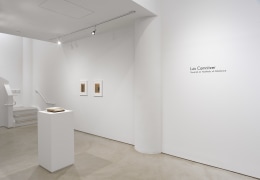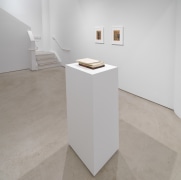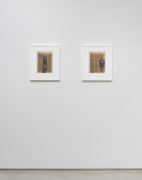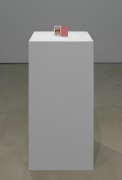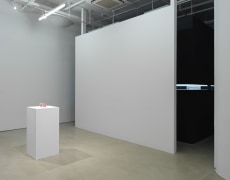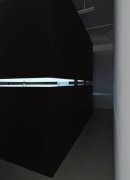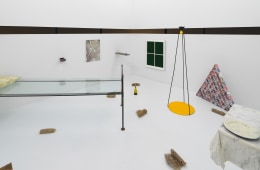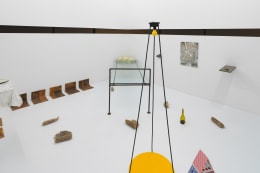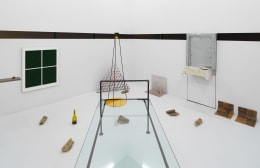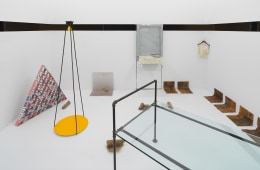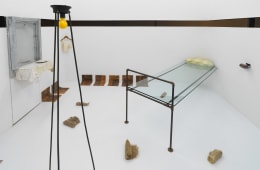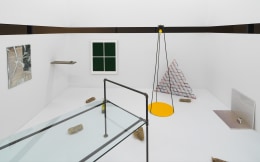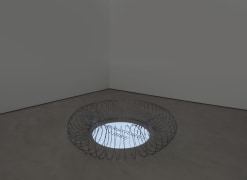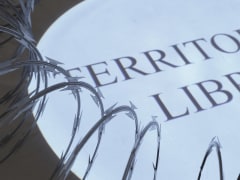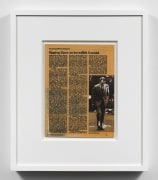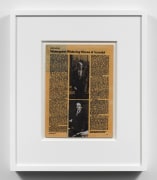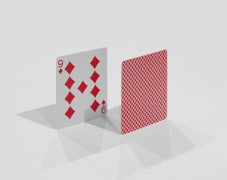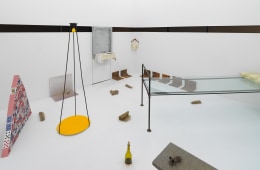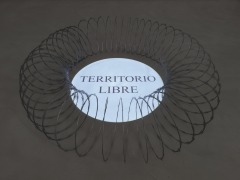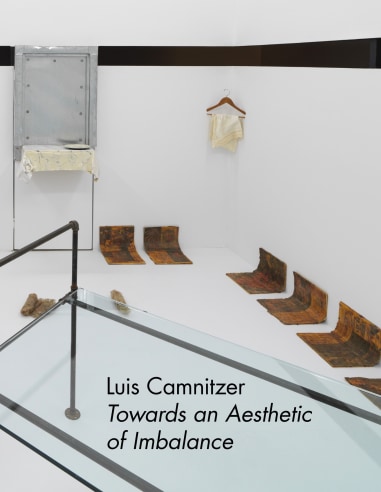
Alexander Gray Associates presented its sixth exhibition of Luis Camnitzer’s work, highlighting two key installations, El Mirador [The Observatory] (1996), and Territorio Libre [Free Territory] (2018). For over five decades, Camnitzer’s interdisciplinary practice has influenced discourses around Conceptualism, pedagogy, and politics.
In 1988, Camnitzer represented Uruguay in the 43rd Venice Biennale, where he produced a series of works that combined physical objects, printed images, and text. In the context of the end of Uruguay’s military dictatorship (1973–1984), these works addressed themes of torture, abuse of power, and repression, combining seemingly disparate elements to elicit poetic interpretations. Despite political instability during the transition to democracy, Camnitzer agreed to participate in the Biennale, realizing that “keeping one’s purity could be in the way of more important things like the cementing of a regained democracy.” Throughout the 1980s and into the 1990s, Camnitzer built upon the political themes in his work, developing new series and projects, including The Agent Orange Series (1985) and Los San Patricios (1992). Conceptually building on the work he debuted eight years prior at the Venice Biennale, Camnitzer presented El Mirador in 1996 at the São Paulo Biennial. Consisting of an enclosed room that is only visible to the viewer through a narrow slit in the wall, El Mirador evokes multiple spaces of confinement: a prison cell, a psychiatric hospital, and a torture chamber. Various objects are placed throughout the white-walled room, which is starkly lit with glaring light, lending the installation a surreal quality. In this tableaux, uncanny elements are gathered––an iron bed frame with a single glass sheet as a mattress, a shattered wall mirror, a house of playing cards, and a window with panes made of Astroturf grass––resulting in a hallucinatory aura, meant to destabilize the viewer’s initial interpretations.
In addition to alluding to an observatory, the work’s title also implicates the one who is looking––the viewer––in the act of surveillance. In our contemporary moment, El Mirador takes on additional meaning: suggesting that our data-driven society functions as a self-sustaining surveillance system, supporting hegemonic structures of power and the status quo. El Mirador can elicit various metaphoric interpretations ranging from political imprisonment to censorship, and ultimately, the instability of one’s own perception.
Similarly, Territorio Libre represents Camnitzer’s ongoing engagement with borders and ideas of freedom. This recent installation consists of projected text on the floor that is encircled by razor wire in a darkened room. Labeled as “free territory,” the inaccessible space is guarded by the razor wire––as a result, the viewer experiences the work in the dark, from the “outside.” Inviting associations with current disputes about borderlands, the refugee crisis, and international powers, Camnitzer’s Territorio Libre is a timely interrogation of fictitious boundaries. In a metaphysical sense, Camnitzer explains: “In the end everything is a prison: the body, the limits of intelligence and imagination, the limits of society. The real prison is an example of an infinite number of prisons. We are always carrying around a prison, wearing it like a suit.”
























